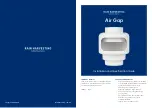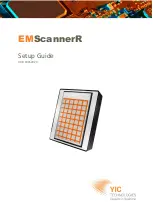
Wavelength
Skin
Type
Spot
Size
Window
Temperature
Treatment
Fluence
Pulse
Duration
Lesion Types
1064 nm
I-V
3 mm
4-8°C
120-180 J/cm²
10-30 ms
Facial Telangiectasia,
Fine Red Spider
Veins, Cherry or
Spider Angiomas
5 mm
8°C
100-160 J/cm²
15-40 ms
Facial Telangiectasia,
Red or Blue Spider
Veins, Periorbital Blue
Veins, Venous Lake
7 mm
8°C
110-170 J/cm²
30-60 ms
Reticular Leg Veins
2-4 mm
755 nm
I-III
5 mm
4°C
50-70 J/cm²
3 ms
Facial Telangiectasia,
Superficial Blue
Vessels
8 mm
4°C
40-60 J/cm²
3 ms
Facial Telangiectasia,
Diffuse Redness
75
EXCEL HR OPERATOR MANUAL
D1796, REV. D, 12/16
Vascular Lesion Technique and Endpoints
• Ensure that the handpiece is in full contact with the skin during treatment.
- Pay particular attention when treating rounded/bony areas.
- Precool the skin to help prevent epidermal damage.
- Ensure that each pulse receives both pre- and postcooling.
- The length of pre- and postcooling required will vary according to size, color, and
depth of vessel.
- Larger, darker vessels require longer pre- and postcooling.
• Do not stack pulses or double pulse.
- For smaller vessels, place treatment pulses adjacent or slightly spaced (avoiding
overlap).
- For larger vessels, leave a half spot size to full spot size space between pulses.
• Endpoints will vary based on type, size, color, volume, pressure, and location of the vein.
- Common endpoints are color change, vein disappearance, and constriction.
- If the clinical endpoint is not reached, shorten the pulse duration. If the clinical
endpoint is still not reached, then increase the fluence.
- The endpoint may not be evident or may be very subtle when treating larger
reticular leg veins.
Vascular Lesion Parameter Guidelines












































